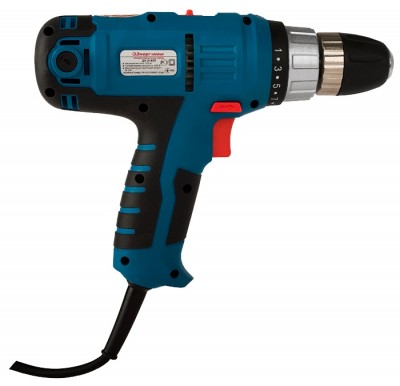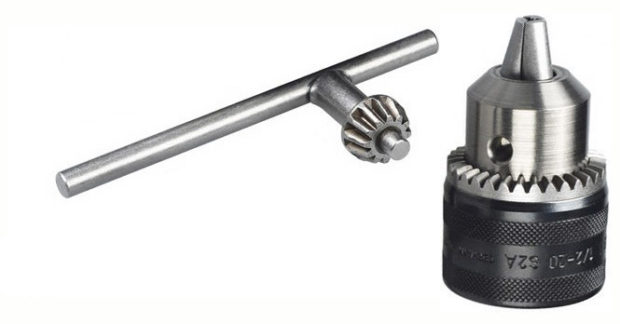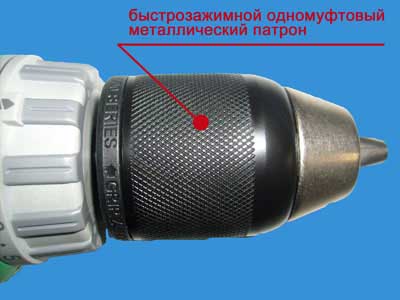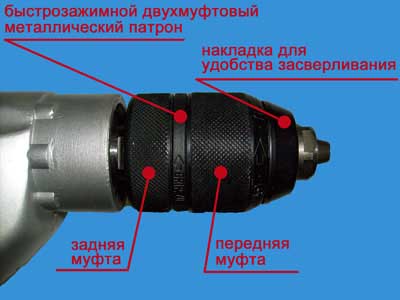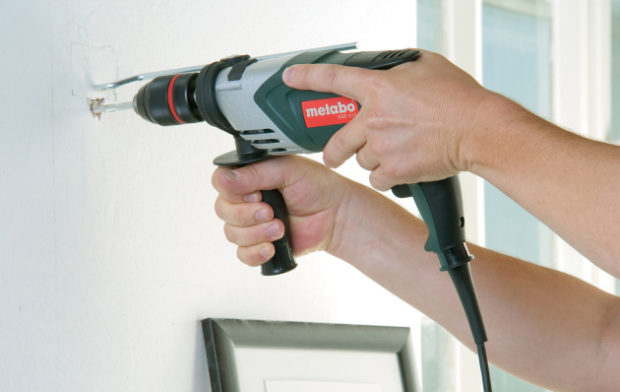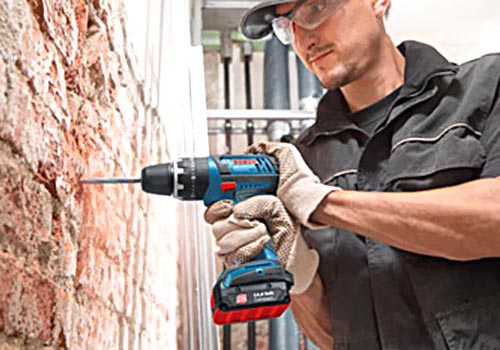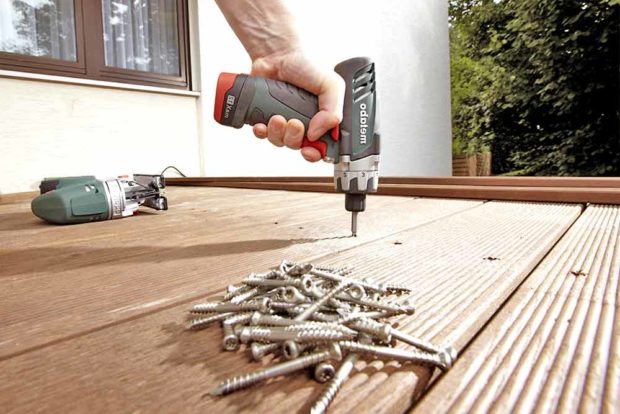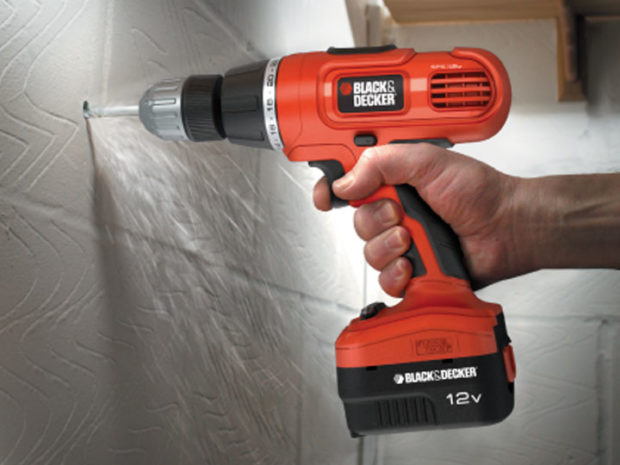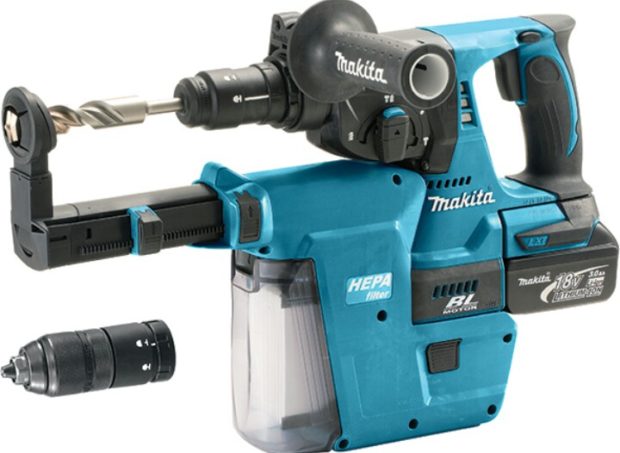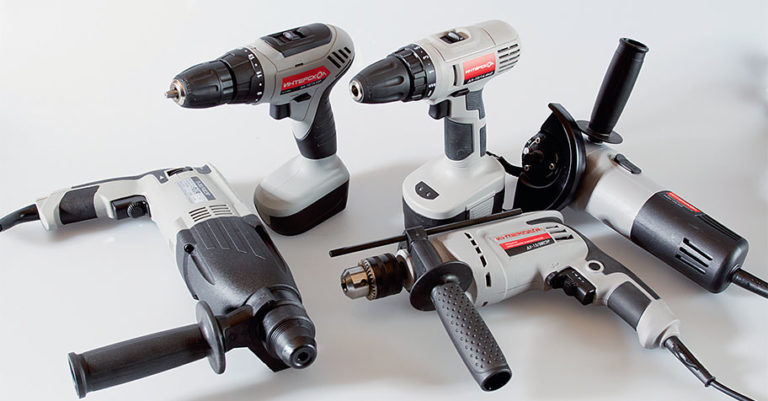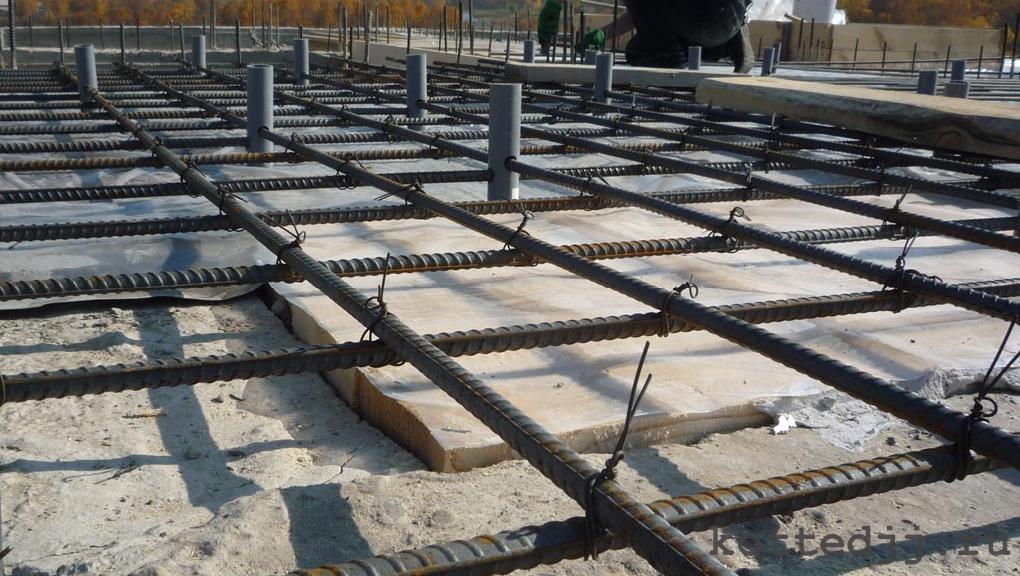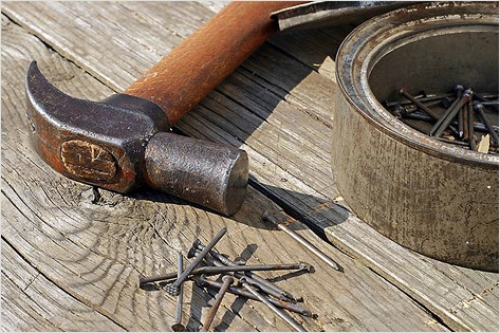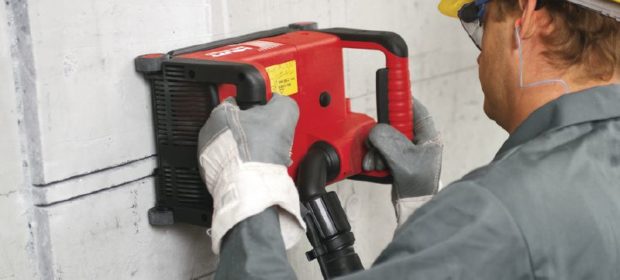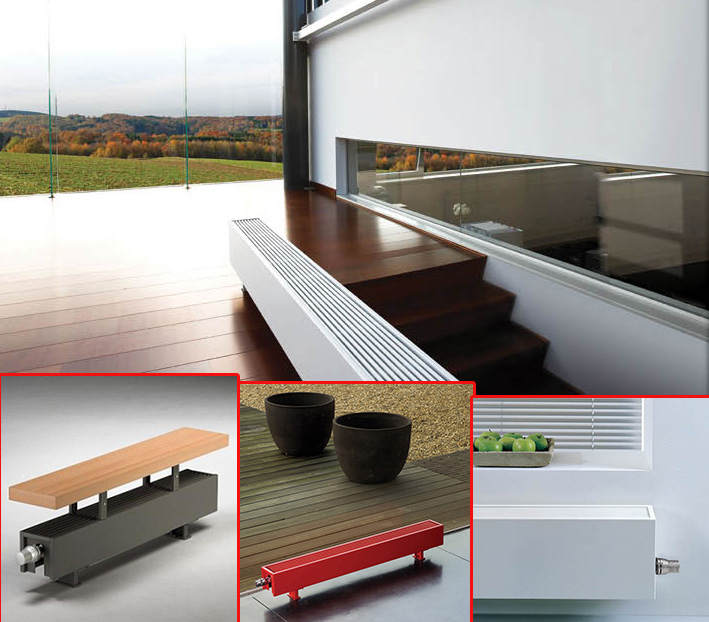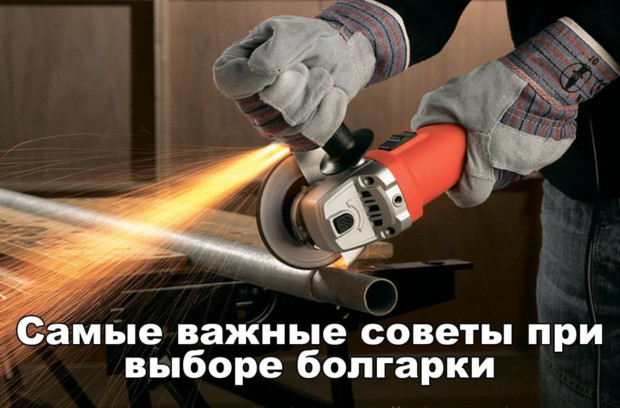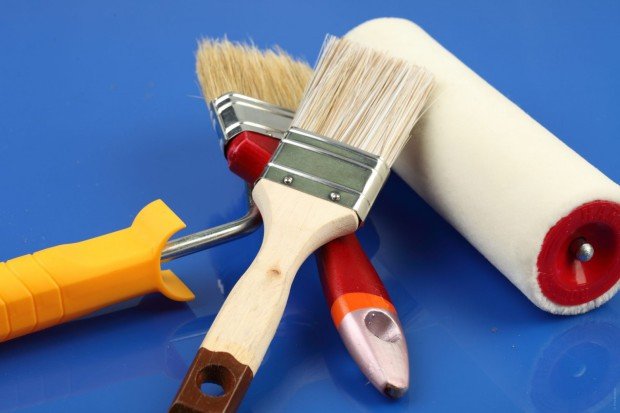9 tips for choosing a drill for your home: types of drills, power, application
Hang a picture, fix furniture, screw a screw - all these operations are often performed within the walls of an ordinary apartment. You won’t call such masters every time, so you need to have a drill at hand, which will greatly simplify minor home repairs. An inexperienced master, having come to the store, can find such a variety of different types of drills that his head will spin. Let's try to figure out how to choose a drill for the house, and when it is better to buy a hammer or a screwdriver, and how do all these, at first glance, similar tools differ.
No. 1. The purpose of the drill. Difference from the punch and screwdriver
The main purpose of the drill is to drill holes in all kinds of materials. An ordinary drill easily copes with metal, wood, drywall and other not very dense surfaces. Impact drill can easily drill concretestone and brick. Special Purpose Devices May Replace screwdriver and a construction mixer, and in the presence of special nozzles with a drill, you can grind surfaces.
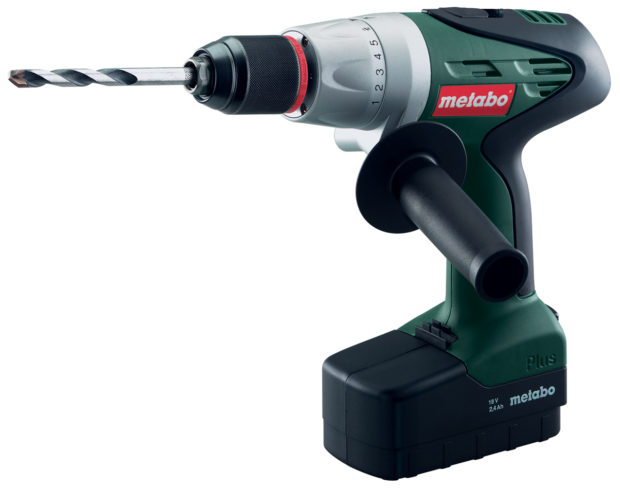
Drill
Impact drill can replace rotary hammer, since it, in addition to rotation, also has an impact force. That is why with its help you can easily make a hole in concrete. On the other hand, if you intend to work mainly with concrete and other dense materials, then it is better take a hammer drill - It is designed for constant loads of this kind and will last longer. The rest of the path of the hammer drill and hammer drill diverge. The designs of these devices are fundamentally different, therefore, a puncher can handle many processes requiring high power. It is used for wall chipping, chipping tileschipping a brick. The main function of the punch is to hammer, while for a drill, this function is to drill.
Difference drill from a screwdriver easily find a person who does not think much in repair work. If the drill drills holes, then a screwdriver is necessary for twisting and unscrewing screws and bolts. The speed of rotation of the screwdriver's chuck is much lower, and this tool has fewer settings. There are drills with a screwdriver function - this is a universal tool at home. If you drill and screw the screws with the same frequency, then it is better to take two separate tools so that the drill does not suddenly fail.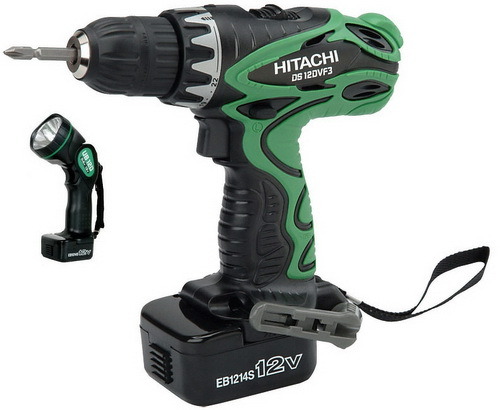
No. 2. Household and professional drills
Like many other power tools, drills are divided into two principal types:
- household, for domestic use;
- professional.
Sometimes a transitional type is also distinguished - semi-professional drills. The principle of operation for household, professional and semi-professional devices is the same - the difference is in power, weight, price, feature set and some other features.
Household drill to complete the vast majority of simple home repair work would be preferable. Its advantages, in addition to the lower price compared to a professional tool, include:
- lightweight design, so working with the tool is easier;
- universality. Household drills are often equipped with additional functions, such as a screwdriver and mixer, and there are a lot of components in the case with them. Professional drills are focused on the performance of a specific task, therefore they are inferior in terms of universality;
- good protection and thoughtful design makes working with a household drill more convenient and safe, which is very important for an inexperienced user;
- The warranty for household drills is generally higher than for professional tools.

On the other hand, use a household tool more than 4 hours a dayotherwise the drill will break quickly. The optimal time for continuous operation is 15-20 minutes, after which the instrument is allowed to rest and cool for about the same amount of time, then you can return to work again. The thing is that for the assembly of household models use less powerful engines and not so strong materials. This does not mean that the drill will break quickly - it means that it is designed for small or irregular loads
If you have to regularly work with a drill for 5 or more hours a day, then it is better to take professional tool. It is distinguished by the presence of a powerful engine that easily withstands solid loads without overheating and without failing. A professional drill can work continuously for more than an hour and about 7-8 hours a day, you can take small breaks. Such a tool is more expensive than a household one, less universal, heavier, but better protected from dust and moisture, and a professional cannot do without it.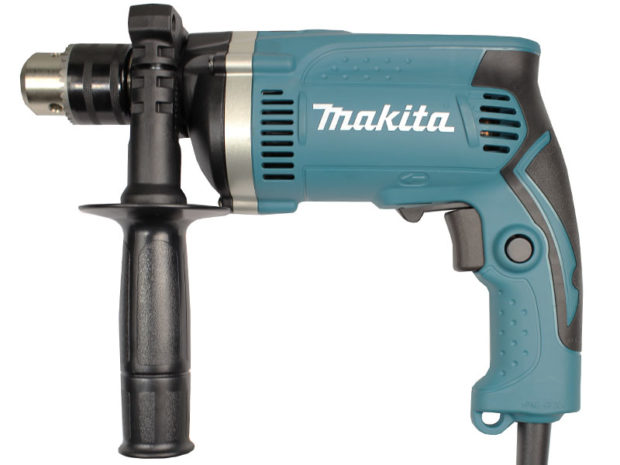
Semi-Professional Drills - A fairly limited class of devices. Transitional models can be represented by household drills with some properties from professional ones, or professional ones, but without any elements.
Which drill to choose depends on what kind of work and how often you are going to carry out. If it is needed, in order to hang a shelf or a picture if necessary, then you can safely stop at the household version. If repair is your main or additional income, then it makes sense to consider professional drills.
No. 3. Types of Drills by Purpose
Depending on what set of functions the drill has, the following main types of tools are distinguished:
- ordinary drill, it is sometimes called shockless;
- hammer drill;
- drill / driver;
- drill mixer;
- angle drill.
All these modifications decently differ from each other, including the price, so when buying it is so important to be aware of the purpose of using the tool.
Conventional drill
This is a drill without any frills. There is no punch function in it, so you can only drill with it wood, drywall, metal and other not very hard surfaces. This tool is suitable for minor repairs in the country, in barn, wooden house. Conventional drills without a shock function can be cordless or run on mains.
Impact Drill
An impact drill will be needed for those who are going to drill holes in concrete, brick, stone and other hard materials. Such a tool is cheaper than the simplest punch, but has some limitations. Such a drill will not stand up to permanent work with dense materials - it will quickly break. In addition, frequent drilling of concrete and stone can adversely affect the accuracy of conventional drilling. If you have regular work with dense materials, it is better to take a hammer drill.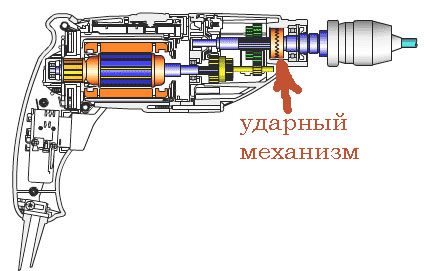
The ability to punch solid materials impact drill acquires thanks to special design. During operation, not only rotational action is transmitted to the drill, but also shock.If the impact in the puncher is due to a complex electromechanical or electro-pneumatic unit, then in the drill the impact is achieved due to the presence of two ratchets. One is located inside the drill, the second is attached to the cartridge. When the two elements are connected, the chuck and drill begin to move in the axial and translational directions, thereby ensuring the function of chiselling, or impact. If necessary, the impact function can be turned off, the ratchets open, and the drill operates normally. However, in some models the ability to disable is not provided - be careful when choosing.
A drill with a punch function is more expensive than a conventional drill, but cheaper than a hammer drill. Plus, it’s also lighter than a punch, so you can call it universal home tool. When choosing a hammer drill, pay attention to the power of the tool. For the impact function to be normal, this indicator must be at least 800 watts. Also pay attention to the reverse rotation function and the presence of a safety clutch.
Screwdriver
It makes sense to choose a drill / driver if you also need a tool to tighten / remove the screws, screws and screws. In the screwdriver mode, such a drill has a low rotational speed and high torque, while in the drill mode it is the other way around. The device cannot be called completely universal, since such a drill is not suitable for drilling concrete and brick.
Drill mixer
The drill-mixer differs from the usual universal drill by the presence of special nozzles in the kit, which make it possible to conveniently mix liquid and semi-liquid compositions. The design of the tool, as a rule, provides for special handles for a comfortable grip during mixing. The drill mixer is suitable for mixing putties, adhesives, paints and other mortar up to 10 l and allows for more thorough mixing than with a manual process.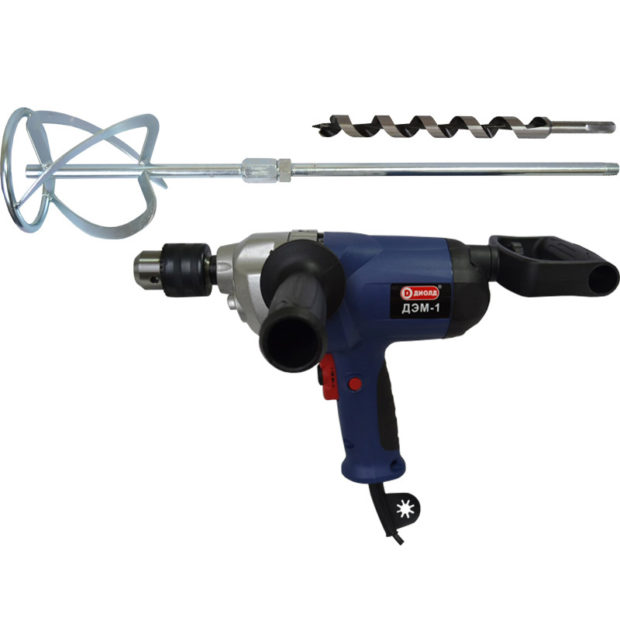
Angle drill
As the name suggests, such a tool is designed to drill holes in the most inaccessible and narrow places where you can’t get with a conventional drill. The design of the device is characterized by the presence of an angular gear and the location of the rotating shaft perpendicular to the housing. Such drills, as a rule, have a low power and there is no need to talk about any impact function.
An angle drill is a very specific tool, therefore it is better to take a conventional model and, if necessary, use a special nozzle - it is cheaper and in most cases more reasonable.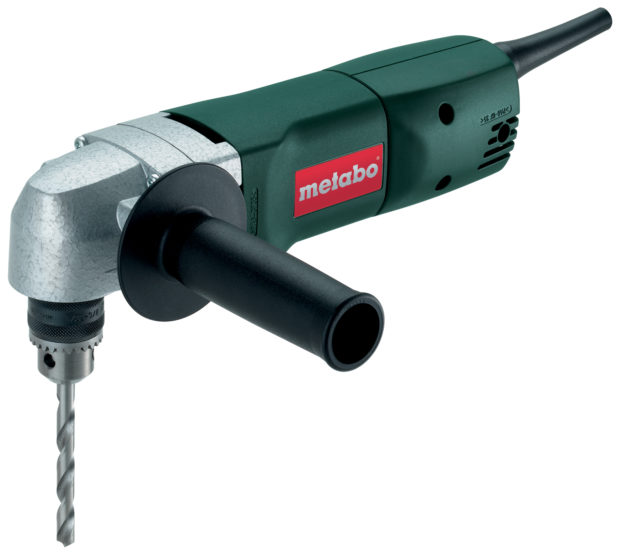
Number 4. Types of drills by type of power
Depending on the power source, drills can be divided into two types:
- network drills They work from the mains, are characterized by high power and ease of maintenance - you just need to find a power outlet and not worry about the battery charge. Binding to the outlet - this is the main minus of such devices, since when working on the street or with frequent power outages, problems may arise;

- cordless drill allows you to work where no electricity at all or network access is difficult. Plus, the lack of wires provides freedom of action. The flip side of the coin is the low maximum power and the need to constantly monitor the battery charge, and also sometimes buy a new one. The battery life is 0.5-2 years, it will be necessary to buy strictly defined batteries.
When choosing a cordless drill, pay attention to battery type. Li-ion Li-ion - the most popular and most preferred, it weighs relatively little and is characterized by durability in work. Nickel Cadmium NiCd It allows you to work normally in cold conditions, but has a pronounced memory effect. Suppose you have 15% of the charge left and you decide to put the battery in charge, the next time the drill may refuse to work just when the charge level is 15%.This, of course, has a negative effect on durability, and it interferes with work. Nickel-Magnesium NiMg the battery does not have such a pronounced memory effect and weighs less.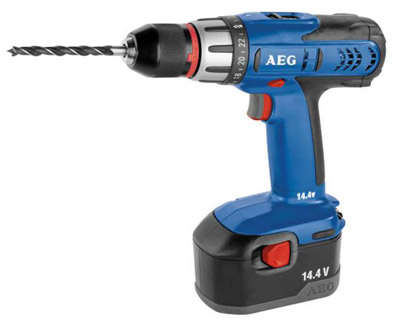
The larger the battery capacity, the longer it will be possible to work with a drill without recharging. More capacious batteries are usually put in professional drills. The recharge time also differs: if in household models it can reach 7 hours, then in professional ones it is much less - about 1 hour.
No. 5. Power drill
The power of the drills on sale varies from 300 to 1500 watts. The higher this indicator, the greater the load can overpower the tool. In professional models, the power is usually above 800-1000 watts. With power, the weight of the device also grows, so taking a drill with a large margin for this parameter makes no sense - your hands will get very tired when working. On the contrary, if you take a model with insufficient power, then your hands will get tired of the fact that when drilling you will have to put extra stress.
If you have to work with materials no stronger than bricks, then you can stop at a drill with a capacity of 800 watts. If you plan to drill concrete or constantly use a drill as a construction mixer, you will need a more powerful model.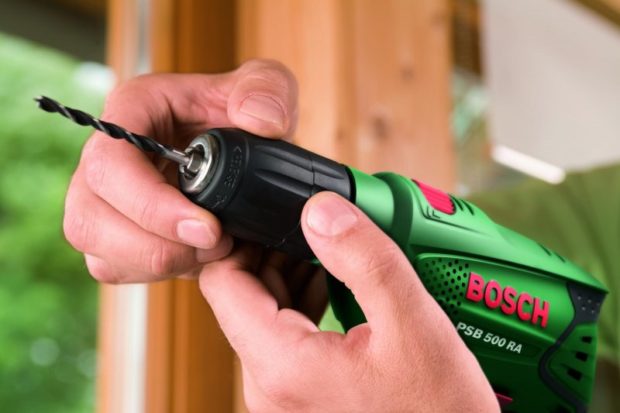
No. 6. Shaft rotation speed and its adjustment
Drill shaft rotation speed at idle can reach 3500 rpm, but such a frequency is far from always necessary. The higher this parameter, the faster it will be possible to drill a hole and the more smooth its walls will turn out. High revolutions are more necessary in order to grind and polish the surface, but also during impact work will also come in handy. In order to tighten the screw, 400-500 revolutions per minute will be enough.
The versatility of using the tool is ensured by rotation speed switch. In the simplest models, a step switch is used; in more advanced models, an electronic switch is used, which clearly responds to pressing force. If you push hard, we get the maximum speed.
It will also be useful speed limiter and soft start. The latter allows you to smoothly accelerate the engine and provides a gradual increase in speed from minimum to required. This allows you to get rid of jerks at the start, overloads and drilling errors.
Number 7. Drilling diameter
The instructions for the drill indicate what maximum and minimum hole the drill can make in wood and metal, for some models this parameter is also added for brick and concrete. If you insert drills of a larger diameter into the drill than those for which it is designed, then the tool will quickly overheat and break. The minimum diameter, as a rule, is 0.3-0.6 mm, the maximum is 30 mm, but often this parameter does not exceed 10-15 mm.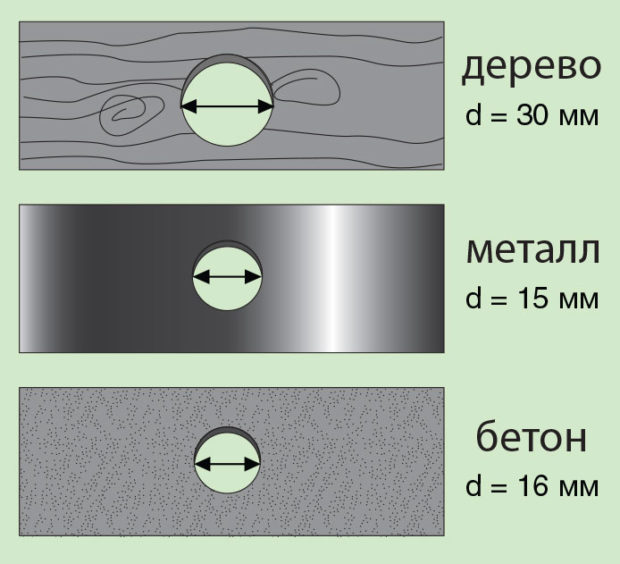
Number 8. Drill Chuck Type
Depending on how the drill is fixed, drill chucks can be:
- key or gear cartridge fixes the drill with a key, clamps it with three symmetrical "petals". It is believed that this mount allows you to more securely hold the drill, so it is used in powerful and impact drills. The minus is the inconvenience during the replacement of the drill, as it is necessary to use a special key. By the way, he may get lost, and then the time for replacement increases several times. Some craftsmen tie a key to a drill;

- keyless mechanism allows you to change the drill very quickly, using only a small manual force. In terms of reliability, it is not inferior to the key cartridge, but it is still used only in low power drills designed for working with not very hard materials. In terms of durability, the mechanism is inferior to the key.


Also, when choosing a drill, pay attention to the diameter of the chuck. The minimum value may approach 0, but there is usually no need to use a grip of less than 1.5 mm.The maximum value can be 10-13 mm and even 16 mm for powerful drills.
No. 9. What else to consider when choosing a drill?
Going to the store to buy a drill, do not forget to pay attention to the following points:
- ergonomics. The drill should have a structure that is convenient for you, hold well in your hand, and not cause discomfort, otherwise it will be impossible to do work with it, and it’ll be quite accurate. The tool handle may vary in diameter - it’s more convenient for anyone. Non-slip and grooved linings will increase safety and comfort during operation, as they virtually eliminate the chance of accidental slipping of the drill from your hands. You can also try pushing the buttons to make sure that the design of the drill is convenient;
- function of fixing the start button allows you to reduce the voltage on the hand, as there will be no need to keep the button pressed while working;
- reverse allows you to change the direction of rotation of the drill by pressing a button. It is necessary when the drill is used as a screwdriver or when the drill is stuck in the material. A similar feature is in almost all modern models;

- anti-lock clutch it is in many models and protects the tool from burnout when jamming or colliding with the fittings, and also protects the user from a reverse impact when the drill stops like this;
- depth gauge - an element on the drill body, which allows you to make holes of clearly required depth. It is convenient when the wall is thin and when drilling it is necessary to make a non-continuous hole;
- engine brake allows you to quickly stop the movement of the drill at the touch of a button. After the termination of work, the drill can rotate for about 10 seconds, and sometimes more, while the drill must be kept on weight. The forced brake function makes it a little easier, but not so necessary;
- anti-vibration system there is, as a rule, only in expensive professional models, it can significantly reduce the vibration of the instrument during operation;
- additional handle can be attached to the body, be removable or rotating, makes it easier to drill dense materials due to additional emphasis;

- spotlight allows you to highlight inaccessible places, built into the drill body;
- dust collector collects part of the dust that is formed when working with concrete and stone;
- equipment. Some manufacturers sell with the drill a spare chuck, a depth gauge from metal, as well as nozzles and some other elements. If you really need all this, then it is better to take an extensively equipped drill - it will be cheaper;
- specific nozzles for a drill are bought separately. There are limiters, mini-drills, circular saws, nozzles for grinding and polishing, screwdriving, nozzle-mixers and even nozzles for bird pinches;
- manufacturer name - This is a guarantee that for your money you will get a really high-quality and durable tool. The topic of drill manufacturers deserves separate considerationbut we’ll note that the leaders in this regard are Metabo, DWT, DeWalt, AEG HILTI, Black & Decker, Bosch, STERN, Makita, Hitachi, Skill, Sparky, Interskol, Einhell, Zenith.

Only a clear definition of the purpose of use and the understanding that a good thing can not be cheap will allow you to choose a really high-quality drill.


